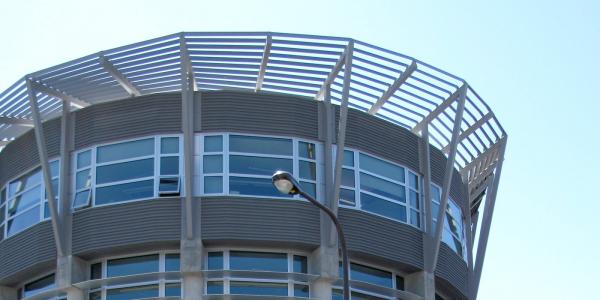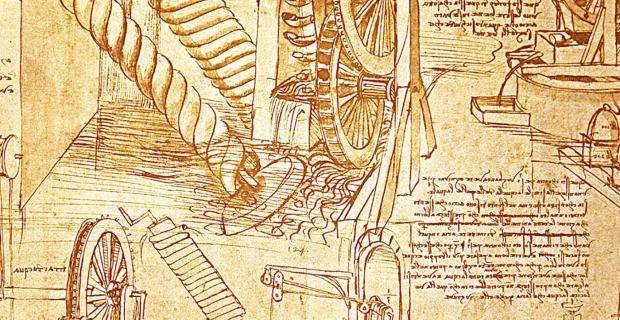A Hippocratic Oath for Designers?

The following essay is excerpted from Sustainable Design: Ecology, Architecture, and Planning, by Daniel E. Williams (John Wiley & Sons, Inc.).
Williams is a Seattle-based architect and urban planner, and a nationally recognized expert in sustainable architecture and planning. In his book, he challenges design professionals to see their projects as essential to human health as well as regional economies and ecology.
The practice of architecture occurs on a continuum between form making and place making. The former is driven by the desire to create novelty or great art or to accommodate the styles and fashion of the period and has been, by far, the dominant trend in the making of buildings and landscapes. But place making, which implies the careful attention to the effects of building on the ecological health of a site and site occupants’ health, has an ancient pedigree that dates back, at least, to Vitruvius in the first century BCE. Ideally, buildings and landscapes would blend both, but these are often warring concepts.
The historically predominant concern for form, however, is giving way to a more balanced view of architecture and landscape design. The driving forces in the change include rising costs for energy and materials and the growing awareness of the ecological impact of buildings, which include 40 percent of all greenhouse gas emissions and substantial ecological damage that can be attributed to the extraction of materials. Not to put too fine a point on it, we are building our way to oblivion. The recent success of the U.S. Green Building Council represents a considerable shift along the continuum of art and place making. But this is only the merest of beginnings.
Harvard biologist Edward O. Wilson describes the twenty-first century as a “bottleneck” in which the forces of rapid climate change, species extinction, and population growth converge. Unless managed with unusual skill and wisdom and graced with considerable luck, the future of Homo sapiens could well be “nasty, brutish, and short,” as Thomas Hobbes put it in the seventeenth century. Cambridge astronomer Martin Rees, for one, believes that our chances of making it to the year 2100 are no better than 50-50 (Rees 2003). Independent scientist James Lovelock is even more pessimistic (2006). Aside from the ongoing threat of nuclear weapons, two converging crises will make the years ahead particularly challenging. The first challenge is climate change, which will raise sea levels by as much as 20 feet, increase the severity of storms, raise the likelihood of severe droughts and heat waves, change ecosystems, increase the number of novel diseases, and disrupt political and economic systems everywhere. The other challenge is posed by the end of the era of cheap, portable fossil fuels. Unusually astute leadership will be required to avoid the possible catastrophe that scientists such as Wilson, Rees, and Lovelock see ahead.
Looking back on our time from a century or two hence, from the other side of the bottleneck, our descendants will see those small beginnings, perhaps unnoticed by us, that altered the human prospect for the better. One such change, I think, will be the changes design professionals made toward place making that began a sea change in the human presence on Earth. Collectively, this will represent a force rather like what we see in the Enlightenment of the eighteenth century; but it will be a global change and much more pervasive. It will alter how we provision ourselves with shelter, food, energy, materials, and water. It will revolutionize economies and foreign policies alike. And it will begin with a shift from energy inefficiency toward hyperefficiency now technically possible and economically feasible. It will culminate in a world powered by current sunlight captured as wind, solar energy, and biomass. The design revolution they will see and perhaps take for granted will grow from disciplines that we call biomimicry, industrial ecology, natural-systems agriculture, and ecological engineering. Will it be nirvana? No, but it will be a world considerably more decent and durable than what lay in prospect in the early years of the twenty-first century.
How might the design professions lead that revolution? The education for designers will have to change a great deal, and that is beginning to happen (AIA 2006). Design professions will need an equivalent to the Hippocratic oath. My suggestion is that it read: “We will cause no ugliness, human or ecological, somewhere else or at some later time.” The first rule of making any place is that it should not impair some other place. But they will also need a compass by which to orient themselves to the larger issues of the time. Drawing on Thomas Jefferson, Aldo Leopold, and Bill McDonough, I suggest that that compass read: “No generation has any right whatsoever to alter the biogeochemical cycles of Earth or impair the stability, integrity, and beauty of natural systems, the consequences of which would be a form of intergenerational tyranny.” They will learn the moral art of assessing costs and risks across generations in ways that do not deprive those to come of life, liberty, and property.
Daniel Williams’s Sustainable Design: Ecology, Architecture, and Planning is a description of a transition from the exclusive concern for form making to the art and science of place making. But it is more than a primer. It is a thoroughly practical call for the design professions to take the next steps in a transformation of the human prospect toward a future that is sustainable and sustaining of the best in human life—one that is lived in partnership not domination.
Photo credit: Tyler/Bright Moments!




